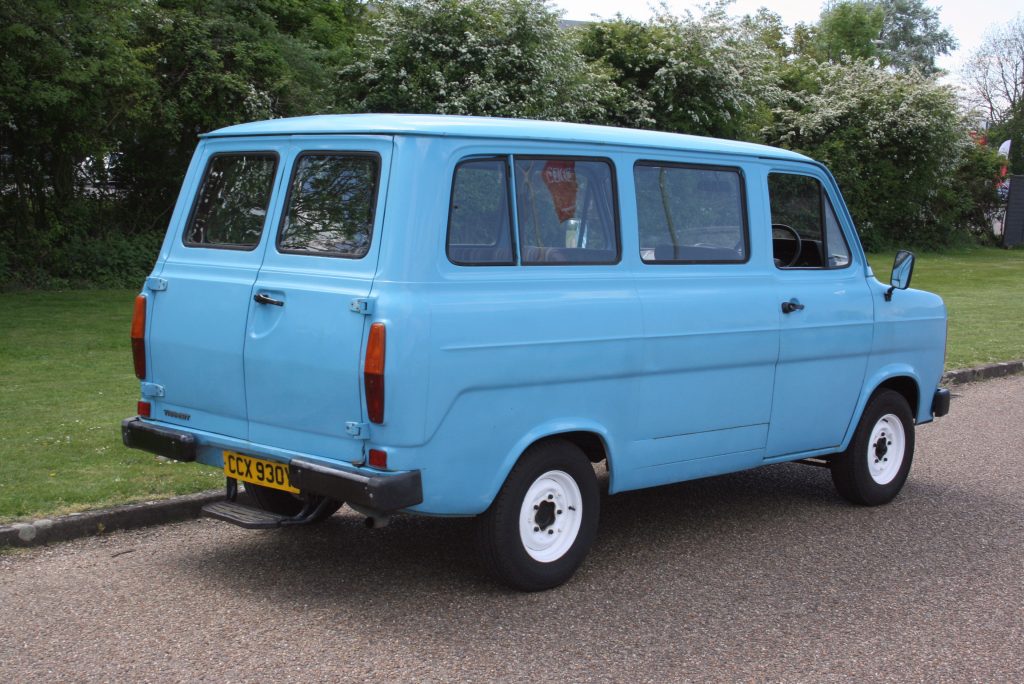Peter Simpson continues his look at the van which transformed its market, how the Mk1 was developed, and the Mk2’s arrival.
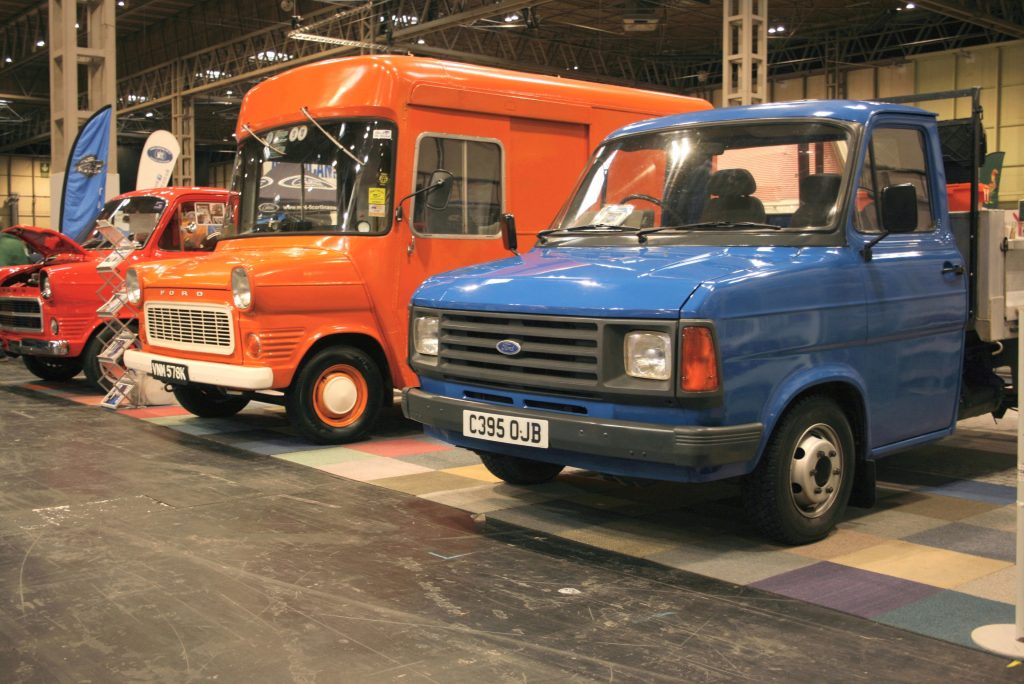
By late 1969, the Ford Transit had established its position as the clear market-leader in the 12-35cwt van market. Its rivals could, it seemed, do little to challenge that status. In fact, Rootes (Chrysler UK from 1970) didn’t even try. Their 15/17cwt PB van continued pretty-much unchanged apart from a new dash and grey plastic grille. It finally ended production in February 1982.
BMC/BL of course had huge issues elsewhere, and its response to the Ford Transit was somewhat half-hearted. It had two vehicles within the Transit’s sector; the J2 and slightly smaller J4. The J2 dated back to 1956, and really owed its continued existence to orders from the General Post Office. It was replaced from late 1967 by the 18/20cwt 250 JU range. Though a significant improvement on the J2 (which frankly, pretty-much anything would have been) the JU250 had some significant shortcomings. Specifically, it was unwieldly to drive and unbearably noisy above 40mph. Unsurprisingly, it had little impact outside of BL’s established fleet customer base among state-managed businesses and utilities.

The JU. and the J4, were replaced in 1974 by the Leyland Sherpa. Despite looking very different thanks to a new cab, this retained the J4’s back end. It really wasn’t a serious Transit rival then, let alone in 2000. By then, the Transit had improved beyond recognition. LDV, however, were still making the same basic van as BL had introduced in 1974.
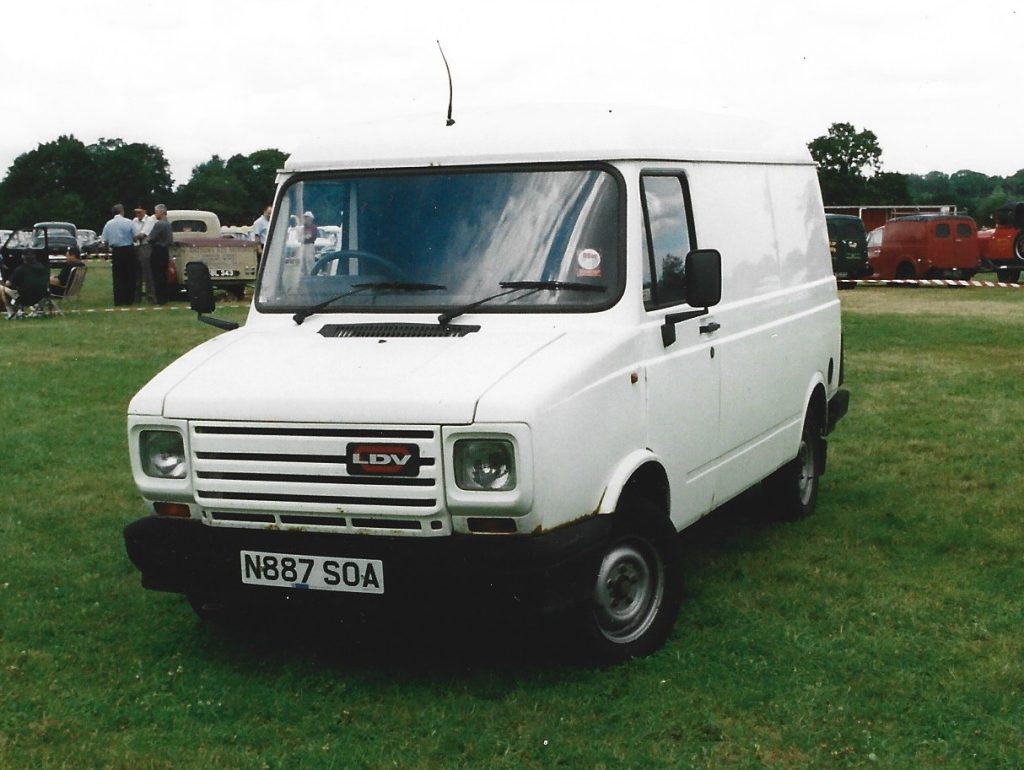
Bedford’s Rubber Band
In truth the only maker who really tried to take the fight to Ford was arch-rival Bedford. Tey replaced their long-running and twice-facelifted CA range with the new CF in August 1969. Though all-new from front to back, the CF’s styling and layout were very clearly developed from the CA. It included the same stub nose and engine access from front and from within the cab.
On paper, Bedford’s offering had a couple of significant operational advantage over the Transit. For starters, the CF’s loadspace of 185cu.ft was a significant improvement on the LWB CA’s 162cu.ft. It also slightly better than the Transit’s 178cu.ft. Probably more significantly, the CF’s stated payloads were 14cwt and 18cwt, rather than the Transit’s 12cwt and 17cwt. Such things are important to operators. Ford certainly seem to have taken the CF’s greater payload as a serious threat. Three months later in October 1969, the Transits were also upgraded to 14cwt and 18cwt.
Significant drawback
The petrol CF did, however, have one significant drawback in many buyer’s eyes. From 1967, Vauxhall/Bedford’s overhead valve engine was gradually replaced by a new ‘slant four’ overhead cam engine. This featured a rubber timing belt.
Its first outing was in the FD Victor. There were, as might be expected with such new technology, a few cases of belt failure causing major engine damage. To be fair, a lot of this was probably down to unfamiliarity and poor or ill-informed maintenance. But the change interval was 36,000 miles, and belt tension was critical. But setting this correctly was difficult without access to tools available only to main dealers.
The CF’s launch was two years after the FD Victor arrived. In other words, it became available at pretty-much exactly the moment when people were hearing about the ‘rubber band’ that formed an integral part of the new Vauxhall/Bedford engine. They were also hearing how it was prone to breakage, and how said breakage caused major internal engine damage.
Ford Transit better
Fleet buyers were especially hard-hit. A lot of these also bought vans. Those that didn’t generally knew people who did and the garages and workshop that fixed them. They would also often read the same trade papers and magazines that reported the failures. Overall, the prevailing view was that having a rubber belt forming the integral link between the top and bottom ends was a Very Bad Idea. So they looked elsewhere. And ‘elsewhere’ meant Ford. This was not an issue for diesel buyers because alongside everyone apart from BMC, Bedford bought in the Perkins 4108.
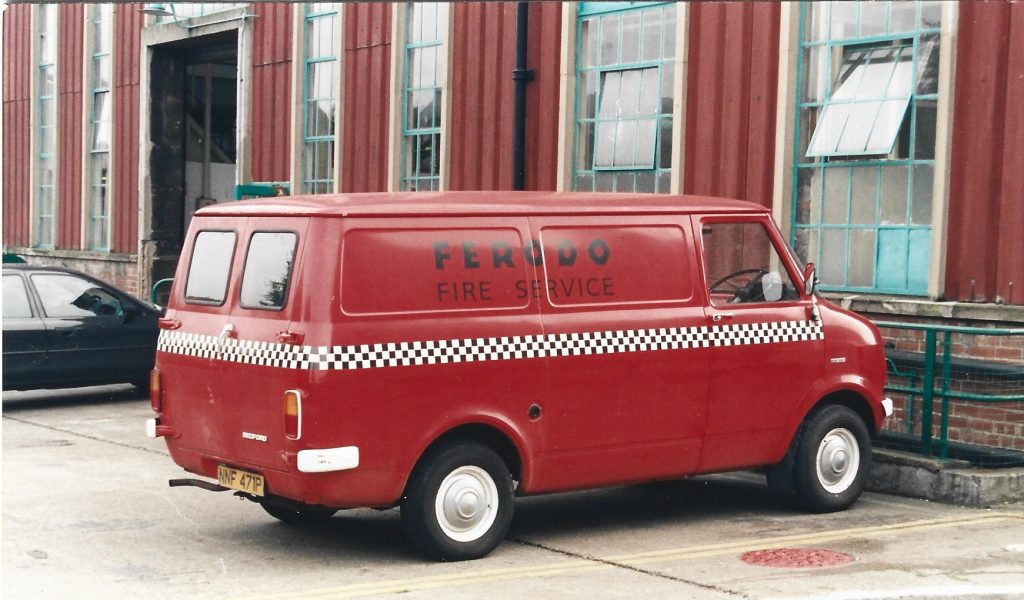
The other thing which might have counted against the CF was that the CF looked like a reskinned CA. Might it have been better to do as Ford had in 1965 and gone for a completely new look? The shell was new anyway so why not make it look new?
Ford Transit Tweaks
Ford, meanwhile, continued to develop and improve the Transit. In December 1970, a year after the payload increases, the whole range was facelifted. The cab interior was changed completely with new seats, new trim and face-level ventilation. The latter was unheard-of luxury in a van at the time! Also added was a foot-operated wiper/washer switch. The clutch and brake pedals now worked through the bulkhead rather than behind it, making them feel rather more car-like.
Oh, and there was one very significant change, a Ford-branded radio (made by Radiomobile) was now a factory optional extra. Real luxury for a van driver!
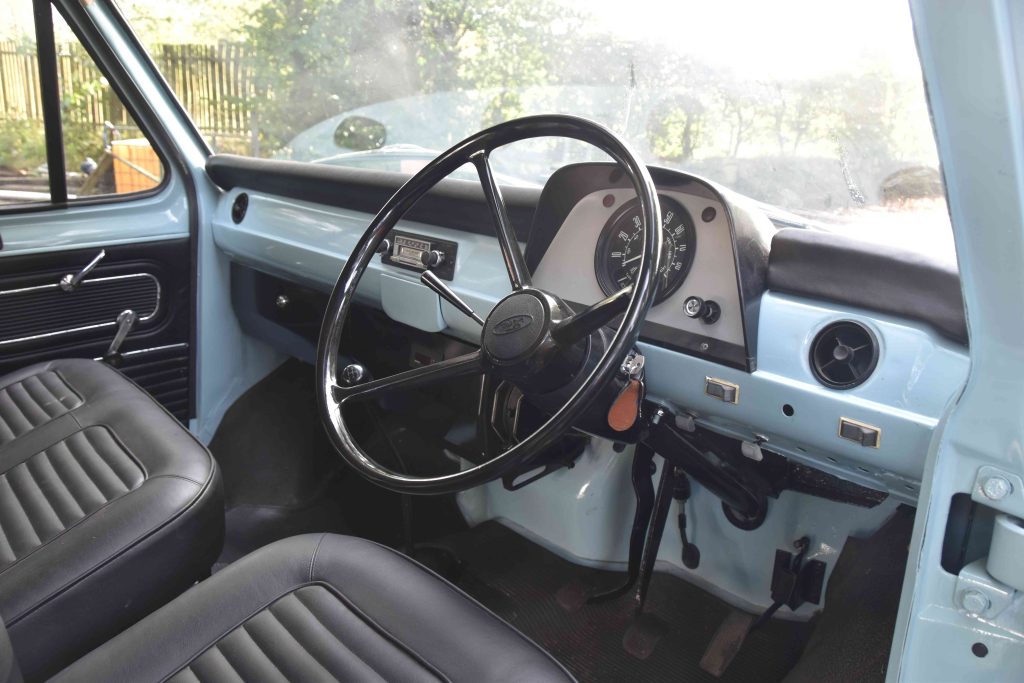
Outside, there was a new eight-panel white grille on the petrol versions. Ford fitted new rear springs to lower the loading height. At this point the Ford Transit’s weight designations and thus model names went from imperial cwt to metric kgs. The 14cwt was renamed and rebadged the Transit 75 (750kgs payload). The 18cwt became the Transit 90, and the 22cwt became the 115. With the LWB Transits, the 25cwt became the Transit 130, the 30cwt the 150 and the 35cwt the Transit 175.
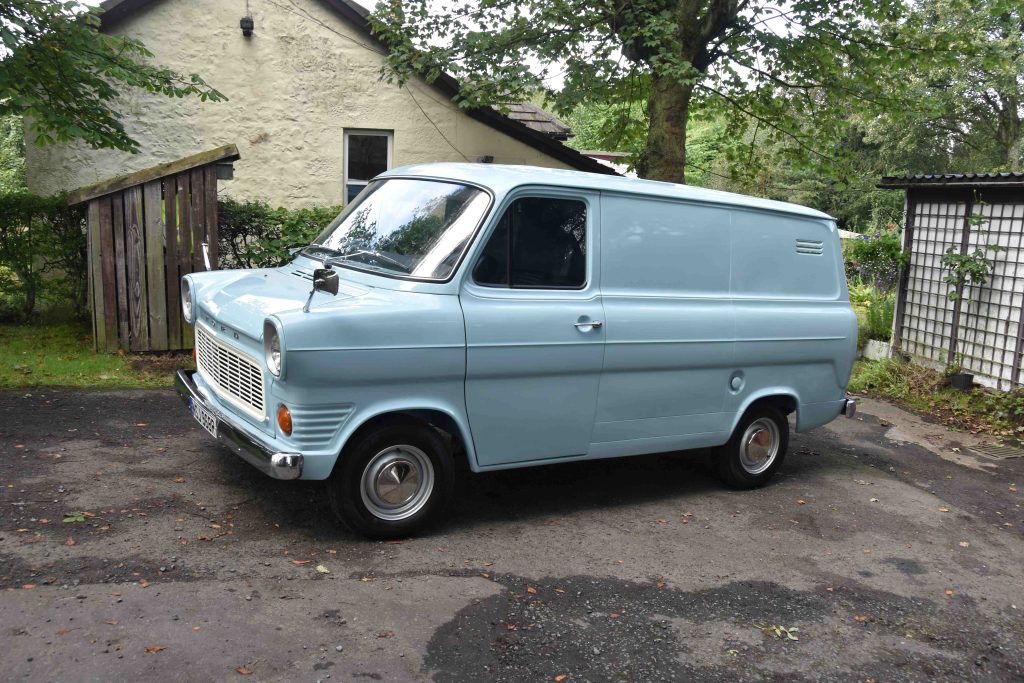
This upgrade coincided with a big change behind the scenes. For the new version Transit production moved from Langley to Southampton. To ensure supplies were not interrupted there was a three-day overlap. During this Langley made the old version and Southampton the new one.
Diesel Difficulties
Meanwhile, Ford had been working on their own diesel engine, to replace the Perkins unit. This engine, known as the York unit, replaced the Perkins 4108 from January 1972. Two versions of the York engine, both four-cylinder 2.4-litre units, were offered. The smaller vans got the 54bhp version, and the 130, 150 and 175 the 61bhp.
On paper, the York engine was an improvement. It was more refined than the Perkins unit, a bit better on fuel and on the larger vans the extra power was definitely needed. And no doubt Ford were pleased to end their reliance for engines on Perkins, an outside supplier who were also selling the same engine to Bedford.
The York engine did, however, have a major issue. Instead of conventional glowplugs, it used a new cold-start system with a single heater element in the air inlet manifold. A great idea in theory, but it wasn’t really up to the job on cold British winter mornings. Within a couple of years, the York engine had acquired a fully-justified reputation for difficult starting. For most drivers the ‘essential kit’ carried in the cab included a large can of Easy-Start.
In fact, from 1977, Ford offered as a ‘free option’ a ‘Viso F’ cold-start kit which introduced a ‘special starting fluid’ (containing essentially the same chemicals as Easy-start) into the inlet manifold via a manual pump mounted on the dashboard. This was also offered as a retro-fit on older York-engined Transits for, according to Commercial Motor at the time, “around £60.” Eventually however, Ford dropped the manifold heating arrangement completely for the ‘Mk2’ Transit of 1978, and fitted conventional glowplugs instead.
More Ford Transit Facelifts
From June 1972 the Ford Transit range received another light facelift, with dual-circuit brakes and four-way hazard lights now standard, along with bright metal hubcaps, PVC door trim and a heater shut-off valve. The De-Luxe Custom pack included a useful light for the engine compartment and some rather less useful (but totally 1970s) imitation wood grain trim on the cab doors.
From early 1973, a High-Top van, with a glassfibre roof that increased loadspace by a claimed 30%, was also offered. This did, however, present a production line issue as the van with the high roof added was too tall for the production line, meaning the roofs had to be fitted in a separate room away from the main line…
The next big change came in March 1975 when the V4 petrol engine was replaced by the 1.6 OHV unit. Five months later in August, in a ‘wow’ moment for the light commercial vehicle market, front disc brakes became standard across the Transit range. At the same time the radiator grille colour changed to black, and diesel versions received a dash-mounted ‘glowplug’ warning to show drivers when the cold-start system was supposed to be helping with cold-starting…
In July 1975, the Transit 75, 90 and 150 were renamed/redesignated 80, 100 and 160 and a new maximum-payload 190, capable of carrying 3.45tons, was added to the range. Just over a year later, on September 15 1976, the one-millionth Transit, a plain white SWB minibus was made and donated by Ford to a South African charity for use as a school bus.
Ford Transit Mk2, or facelfted Mk1?
The general public regarded the new-look Transit introduced in 1978 as a new model, and Ford’s massive promotion of it did nothing to disprove that. Internally, however, Ford internally considered it to be the first (and, as it would turn out, only) major facelift of the Mk1. The basic shell from the A post back, was carried over. Elsewhere, however, there were many, many changes. As facelifts go, it was certainly a big one, and showed Ford’s determination not to let the Transit become dated.
And as they had with the Transit’s launch in 1965, Ford carried out extensive research to find out what users liked – and just as importantly did not like – about the original Transits. Prototypes were also tested extensively, including in America where Ford of Europe were hoping for sales. These, unfortunately, never materialised.
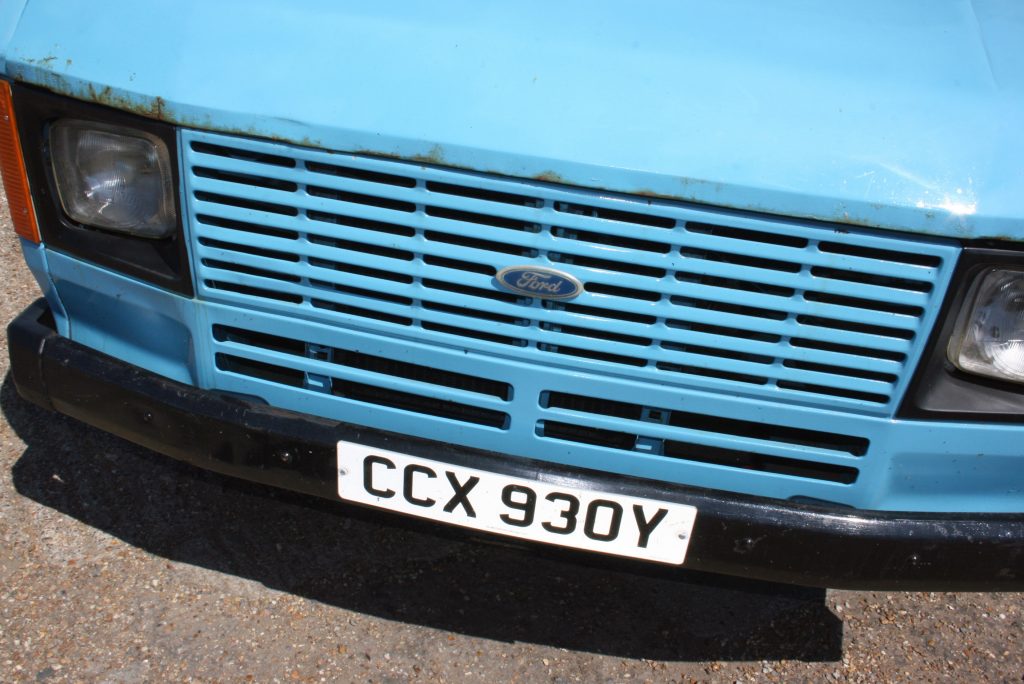
The big changes were at the front and inside the cab. A complete new front end was provided which was big enough to take a four-pot petrol or diesel unit. The styling was crisp and modern, and also shared several design cues with contemporary Ford cars. Inside the cab, the car-like theme was intensified. In fact, some of the first advertising showed only photographs of the dash and controls and referred only to “the new Ford” so people would be surprised and intrigued to learn the newcomer was actually the new Transit.

Under the bonnet, the new Transit came with five choices of engine; the relatively new overhead cam ‘Pinto’ engine is 1.6 or 2.0 litre form were the base petrol options, though the old 1.6OHV was also available; this was basically for old-school buyers who distrusted timing belts. As before, the 3.0litre V6 ‘Essex’ powerplant was available if performance was required.
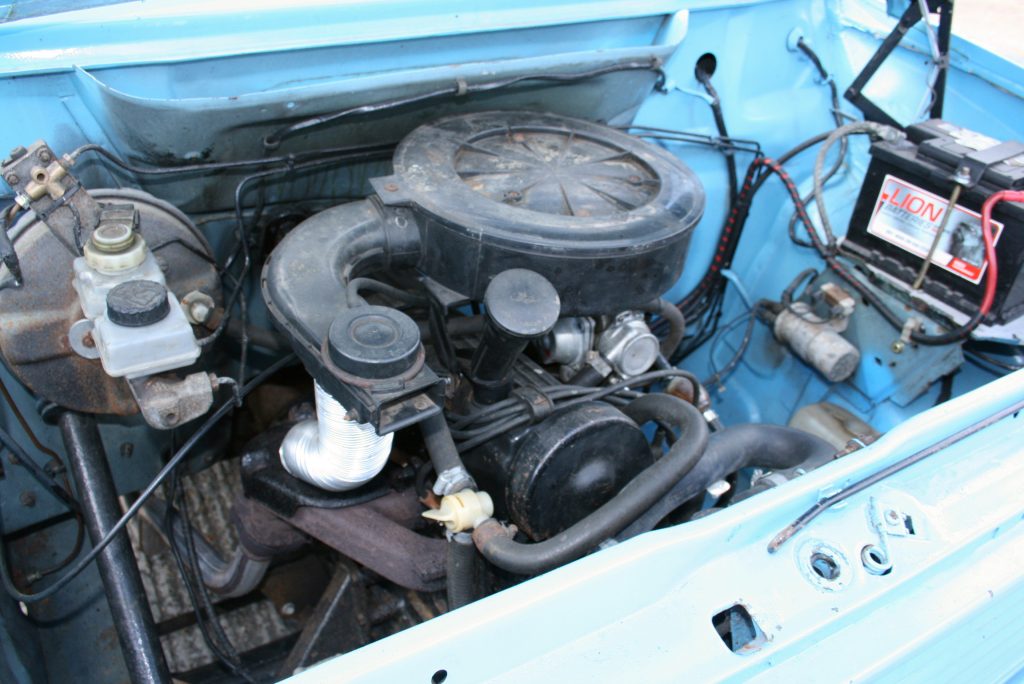
A Better Diesel
When it came to the diesel option, Ford were aware that they had a significant perception obstacle with the York engine and its cold-starting issues. Consequently, they went right through the powerplant and made major improvements not only to the engine itself but also its installation and some of its ancillaries. The most important improvement, of course, was proper glowplugs instead of the inlet manifold heater. Other changes however included improved piston pins and conrod bearings, a stronger timing belt, improved injector pump seals, larger water pump bearings and a new fuel sender unit.
That lot, but mainly the glowplugs, sorted the issues associated with early York engines, and in the 1978-on Transit, the York engine was entirely satisfactory. This time, though, it was the turn of the new petrol engines to present a slight issue, and one which led to many of them sounding not unlike a diesel, but we’ll come back to that next time…
Much better cab
The new cab was like nothing that had ever before been offered to van drivers. Full instrumentation courtesy of a very similar dash to that found on contemporary MkIV Cortinas, a driving position that combined car-like controls and layout with a light van’s visibility and comfortable good quality trim materials. There was even a choice of trim colour! As before, there was a Custom options pack which included halogen headlights, a double passenger seat (also an option on the base cab) imitation wood-grain fascia, three-way adjustment for the driver’s seat, door armrests, a Ford radio and, so that no-one could be in any doubt as to what you had, a ‘Custom’ badge on the rear doors.
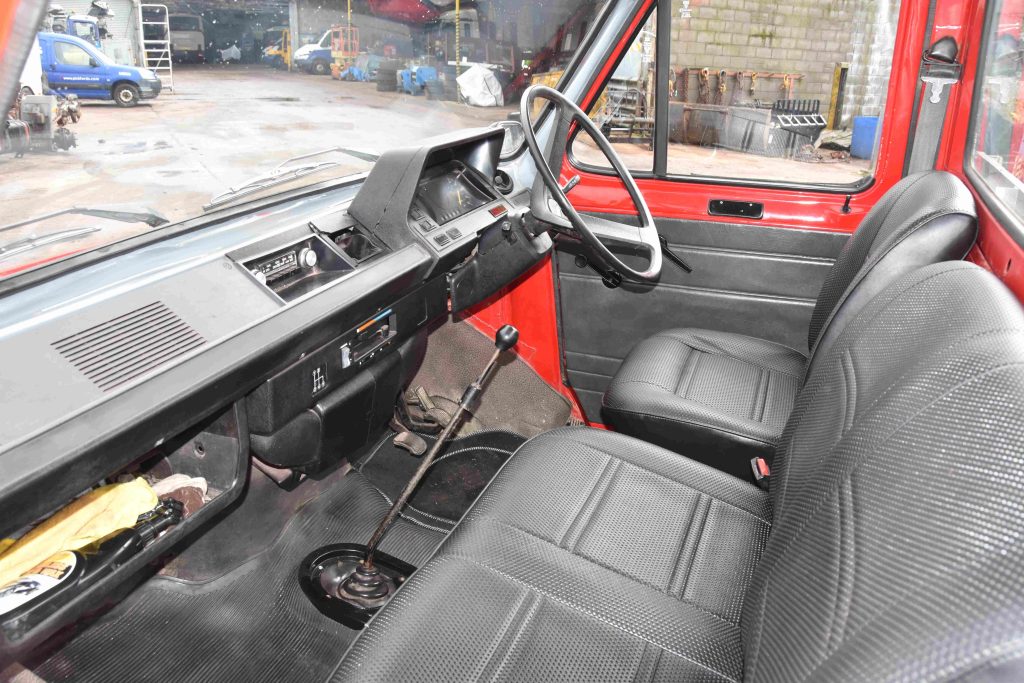
Ford hadn’t, however, lost touch of the practicalities of vans, and the importance of reliability and ease of servicing and repair. Consequently, the Mk2 Transit incorporated numerous changes aimed at making maintenance easier. There were little tweaks such as small holes in the brake drums allowing lining thickness to be checked with the drums in situ, a clutch inspection plate in the bellhousing, single-leaf springs which did not need lubricating, transparent containers for brake fluid and coolant and more.
Press launch
Back then, as now, commercial vehicle launches tended to be rather lower-key than car ones; there are far fewer members of the press to invite, and dealer launches tended to be gatherings of the local business community rather than open to all. For the new Transit however, Ford pulled out all the stops, with no fewer than three separate launches. The main European launch, on January 16-20 1978, at the Military Vehicles and Engineering Establishment in Chertsey, saw the new van launched to the specialist commercial vehicle press.
This was followed immediately by a second launch event on January 21-24 at Castle Combe Racetrack, attended by dealer principals as well as further selected members of the press. Finally, between February 13 and 17, the new Transit was displayed and available to test at an event in Bordeaux that was primarily to launch the new Mk3 Ford Capri. Having the Transit there as well however meant it was available to car journalists as well as the commercial vehicle fraternity.
And with that, the new Transit went on sale from March 1978. And as we will see next time, it all went rather well…
To read more articles like this every month, subscribe to Classic & Vintage Commercials magazine by subscribing here. And find the latest news, exclusive looks and more at the CVC website here.
